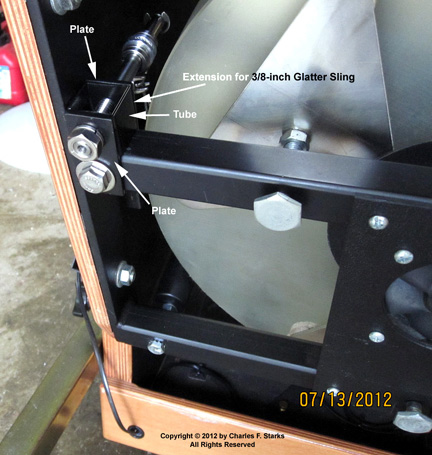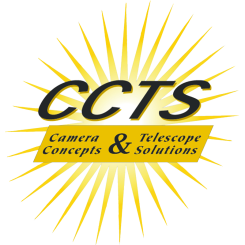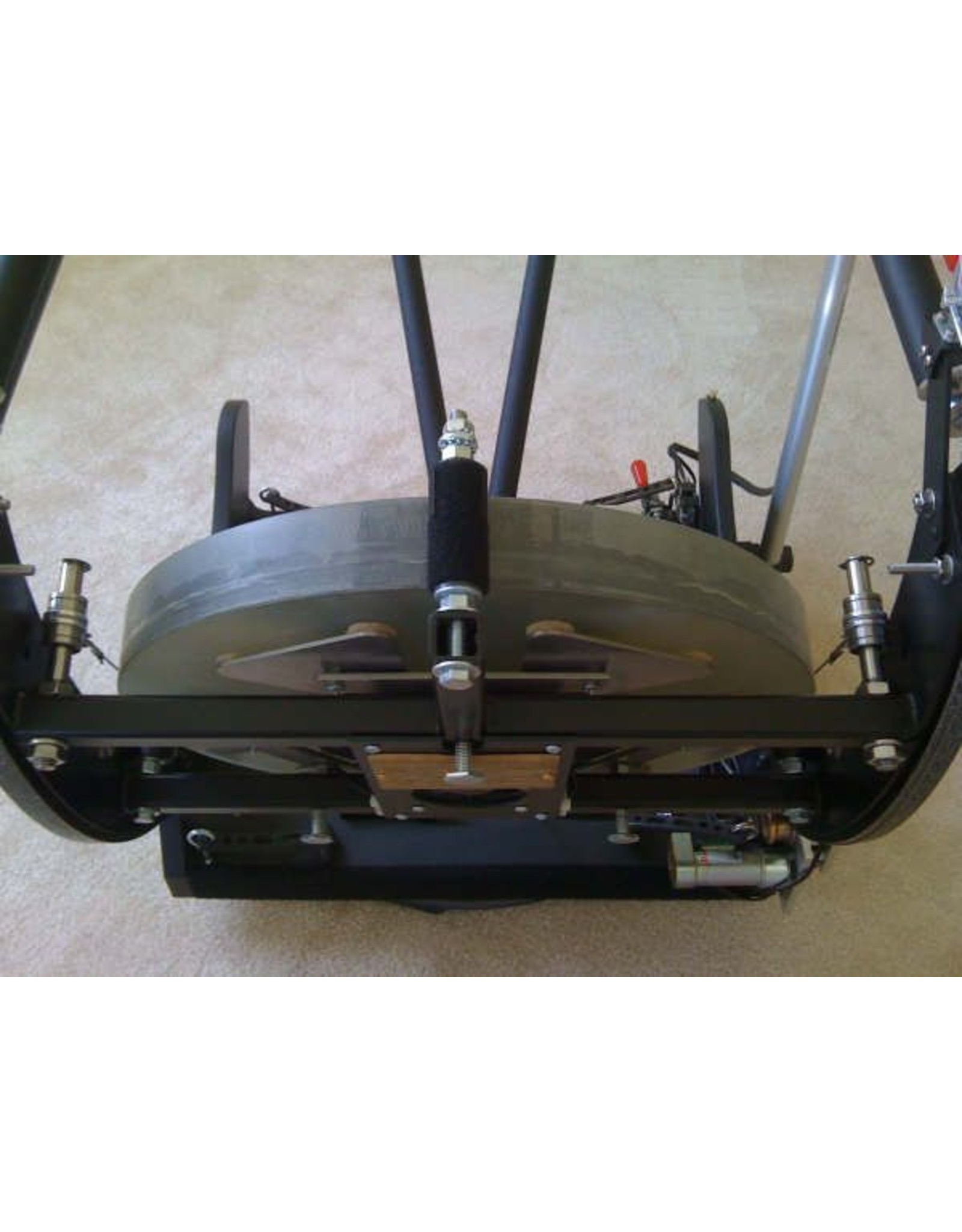Howie Glatter Cable Sling Kits
| Article number: | HG-SLING |
| Availability: | In stock |
| Delivery time: | In Stock! |
The Howie Glatter Sling is a fantastic mirror sling for big Dobs. Once installed and adjusted, and the primary mirror is collimated, the optical axis of the primary mirror is coincident with the mechanical axis of the OTA and it will stay that way! The Glatter Sling eliminates mirror movement from the center of the mirror box and keeps the optical axis perpendicular to the plane of the mirror box.
Installation of the Glatter Sling is a one time task, but it is not simple and requires time and patience. However, it is well worth the effort.

In addition, some telescopes might require relocation of the sling support bolts to a position a little higher on the mirror cell frame, requiring construction and installation of extensions, one of which may be seen in the above photograph. This design requires a couple of brackets that lift the mounting point of the sling bolts up higher so they don’t contact the edge of the mirror.
At the time of this writing, only the Obsession 15 is known to require the extensions. The relocation is needed in order to prevent the mirror from contacting the linear bearings as the mirror is raised to its center position in the mirror box. Without the extensions, the mirror cannot be centered top-to-bottom in the mirror box. It also is known that the Obsession 20 and 25 do not require extensions.
Markless Astronomics has designed and fabricated an extension design similar to the A. French approach for the extensions and offers them for sale, if needed, for your own installation, or if you have us install it. The extensions are 100% steel and are very heavy duty. Each extension consists of two machined plates, machined spacer tube, and stainless steel attachment bolt, washers, and nut. These extensions are required on an Obsession 15 Classic if you intend to center the mirror within the mirror cell.
Please be sure to check off the box at the top if you need these extensions for your 15" Obsession.
Please be sure to include information in the drop downboxes above concerning Telescope Model and size, Size of Bolts, and length of original sling strap. (See diagram for proper measurement)
PLEASE NOTE: DUE TO THE FACT THAT EACH OF THESE SLING KITS ARE CUSTOM ORDERS, EXPEDITED SHIPPING SUCH AS 2 DAY AIR OR NEXT DAY AIR ARE NOT GENERALLY AVAILABLE. YOU MAY, HOWEVER, CHOOSE TO SELECT ONE OF THESE SHIPPING METHODS WITH THE UNDERSTANDING THAT THE EXPEDITED OPTION WILL BE GIVEN ONCE THE PRODUCT IS MADE. PRODUCTION OF THE SLING KIT ITSELF MAY TAKE 5-7 DAYS AT THIS POINT.
Please read through the following documentation concerning the installation of your sling kit. If there is any doubt in your mind concerning the proper sizing, we are available to assist you. Please make note of the last image posted above which will show you how to measure the proper sizing of your sling kit. This is particularly important if your scope is homemade or custom built.
Here is the information posted by the creative genius who invented this very essential item for any larger dobsonian. Posted 20 September 2009 - 07:10 AM on the Cloudy Nights Forum:
I will copy below the text of my upcoming webpage information on the sling, together with some photos of the sling installed on an 18" UC Obsession:
Astigmatism free, perfectly collimated views, no matter where you point your telescope, and no matter where you position the focal plane with the primary! "
The Glatter Sling ™ for Obsession and other Dobs is a new development in primary mirror edge support systems that eliminates the problems of astigmatism and miscollimation present with many commercial and ATM slings. It is produced as a bolt-in replacement sling kit for Obsession telescopes, as well as a component for amateur telescope makers.
What's wrong with some slings ?
In alt-az mounted Newtonian telescopes such as Dobsonians, U-shaped slings provide the best edge support for the primary mirror because they produce the least optical surface distortion. However, slings have a few potential problems. They are:
1. Up and down motion of the mirror in the cell, which decollimates the optics. All plastic webbing slings (Nylon, Kevlar, etc.) stretch significantly under the mirror's weight when the scope is pointed towards the horizon, and then relax and pull the mirror back up when pointed towards the zenith. The mirror moves up and down in the cell, de-collimating the scope. This can be easily seen with a laser collimator. Slower excursions can occur when plastic slings absorb water from the air and elongate.
2. Side-to-side pendulum motion which decolimates the optics.
When the scope is pointed towards the horizon there is very little frictional force between the mirror and the back support pads. If the mirror is not restrained laterally it can easily swing sideways when the scope is slewed rapidly in azimuth, if the rocker box has not been carefully leveled, or if the scope is used on an equatorial platform. The mirror may "stick" on the back pads and not return to its lowest equilibrium position, de-collimating the mirror.
3. Out-of-plane forces which astigmatize the mirror.
If the points that the sling is supported from are in front of or behind the mirror, the sling will angle backwards or forwards towards the mirror edge, and exert an out-of-plane force at the points where the sling joins the sides of the mirror, pulling on and "potato-chipping" the mirror. Since the mirror is provided with collimation screws that can adjust it forward or backward with an inch or so of travel, sling parallelism to the mirror can not be maintained when the sling is suspended from fixed support points.
Also, to avoid distorting the mirror's surface the sling must support the mirror with a force exerted effectively at the mirror's center of mass, and acting parallel to the plane of the mirror. Because of the concavity of the mirror the position of the mirror's center of mass is not half-way through the thickness of the mirror but a little more toward the back, and therefore the sling should be positioned on the edge of the mirror this same distance from the back. With a web sling or a wide metal band it is difficult to insure that the sling support is effectively under the center of mass.
The Glatter Sling:
My sling implementation avoids all the above mentioned problems.
1. As have others, I use wire rope in order to eliminate sling stretch. Stainless steel wire rope, preferably plastic-jacketed to provide a cushion between metal and glass, provides an almost ideal sling material. With adequately sized wire rope, stretch under the mirror's weight is negligible. With the narrow cable it is easy to ensure that the sling acts at the plane of the mirrors center of mass. Small self-adhesive velcro guide strips, forming a notch for the cable, are placed on the mirror edge at the bottom and sides keeping the sling in place front-to-back.
2. I replace the split bolts with hardened stainless steel shafts and hang the sling from low friction linear ball bearings that ride on the shafts. The sling support points move with the mirror when it is adjusted forward or backward, and the sling always hangs straight down onto the mirror, parallel to the mirror plane, eliminating out-of-plane forces and the resulting "aslingmatism".
3. I replace the mirror edge bumpers with ones that have an off-center axial hole, so that they can be eccentrically adjusted by rotation to just miss touching the sling at each side. This restrains the mirror to its lowest equilibrium position, eliminating sideways miscollimation.
Obsession has made the sling supporting split bolts in two diameters, 3/8" and 1/2", so the replacement sling kits come in both sizes. Check and specify your split bolt diameter when ordering.
The Glatter Sling kit includes:
(2) hardened stainless steel threaded shafts with stainless steel nuts, lockwashers, and e-clips
(2) stainless steel linear bearings with cable retention rings
(1) stainless steel wire rope sling, cut and stripped to length and terminated with epoxy
(2) stainless steel wire rope clips
(6) self-adhesive velcro hook strips
(3) velcro loop strips
(1) 5.5mm nut driver sling adjustment tool
(2) Delrin eccentric bumpers
Installation Instructions






















